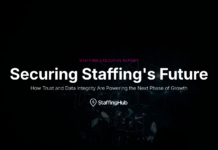
Key takeaways:
- Nearly 60% of employers struggle with unqualified applicants while 34% receive too few candidates overall, creating quality vs. quantity challenges.
- AI adoption in recruiting has grown 428% since 2023, with 26% of employers now using AI tools, primarily for writing job ads and candidate communication.
- Communication breakdowns persist as the top frustration — 59% of job seekers report being ghosted by employers while 51% of employers struggle with unresponsive candidates.
Candidate quality continues to be the greatest online recruiting challenge for employers, according to iHire’s 2025 State of Online Recruiting Report. Nearly 60% of employers report receiving too many unqualified applicants when recruiting through job boards, while 34% struggle with receiving too few applicants overall.
Despite these quality concerns, job boards remain essential — 69% of companies conduct most or all of their hiring through these platforms, and 32% plan to increase their reliance on job boards in the coming year.
Hiring activity increased 6% year-over-year among surveyed employers, with 80% currently hiring. However, 32% expect economic uncertainty to impact their hiring efforts, suggesting continued caution in talent acquisition strategies.
To combat these hiring challenges, employers are increasingly exploring alternative approaches:
- 42% focused on internal mobility and promoting existing employees
- 37% hired from their talent pipelines
- 31% rehired former “boomerang” employees
- 28% invested in upskilling or reskilling current staff
AI transforms the recruiting process
AI adoption in recruiting has exploded, with employer usage jumping 428% since 2023. Currently, 26% of employers use AI in their recruitment efforts, primarily for writing job advertisements (73% of AI adopters) and candidate messages (69% of AI adopters).
Job seekers are also embracing AI technology, with 29% using AI tools to write or customize resumes and cover letters — up from 17% in 2024. However, concerns persist on both sides. Employers worry about fake candidates and inauthentic applications (24% each), while job seekers fear AI will replace their roles (24%).
Skills gaps, communication struggles persist
The skills shortage continues to impact hiring, with 55% of employers expecting the skills gap to affect their talent acquisition efforts in the coming year. Meanwhile, almost 30% of employers cite the aging workforce as a concern, even as 10% of job seekers are coming out of retirement.
This year’s findings also show a communication breakdown between employers and candidates — 59% of job seekers cite being ghosted by employers as their top challenge, while 51% of employers struggle with unresponsive candidates.
And job seekers are expecting clear communication and information from employers before they even apply, including:
- Hiring timeline transparency (61%)
- Specified salary ranges (57%)
- Direct contact information for hiring managers (41%)
- Clear separation of must-have vs. nice-to-have qualifications (36%)
The biggest turnoffs include lack of salary information (61%) and job postings that don’t contain the employer’s name (51%).
Recommendations for staffing agencies
For staffing agencies, these challenges are an opportunity to demonstrate value by:
- Prioritizing candidate quality over quantity through better screening and matching processes
- Expanding service offerings to include talent development, internal mobility consulting, and pipeline management
- Investing in AI capabilities while addressing client and candidate concerns about authenticity and bias
- Focusing on skills-based hiring approaches that look beyond traditional qualifications
- Enhancing communication processes to differentiate from competitors who may be contributing to the ghosting problem
- Helping clients improve their employer branding and job posting effectiveness
See iHire’s full report to learn more about current trends and challenges in online recruitment.






